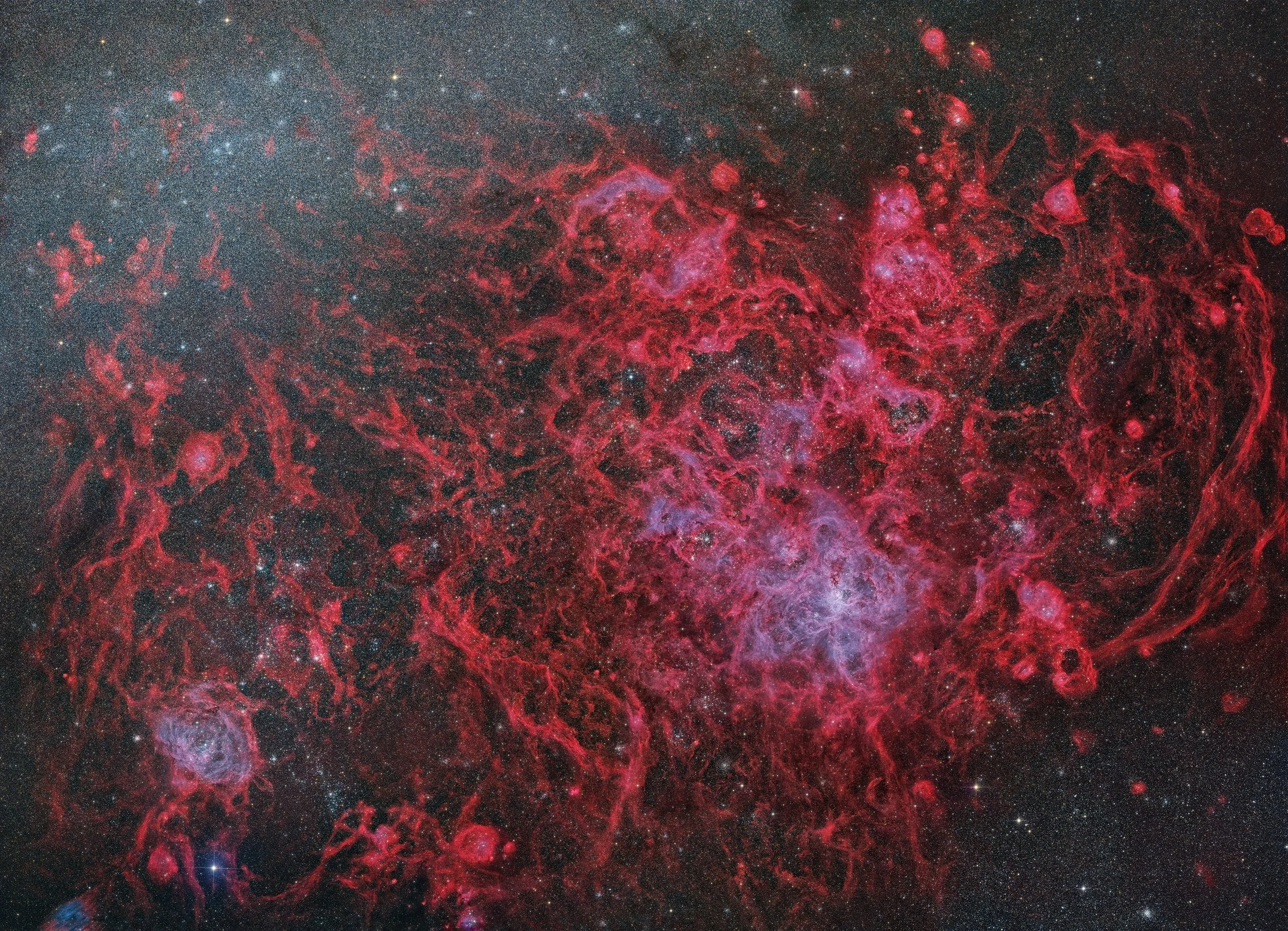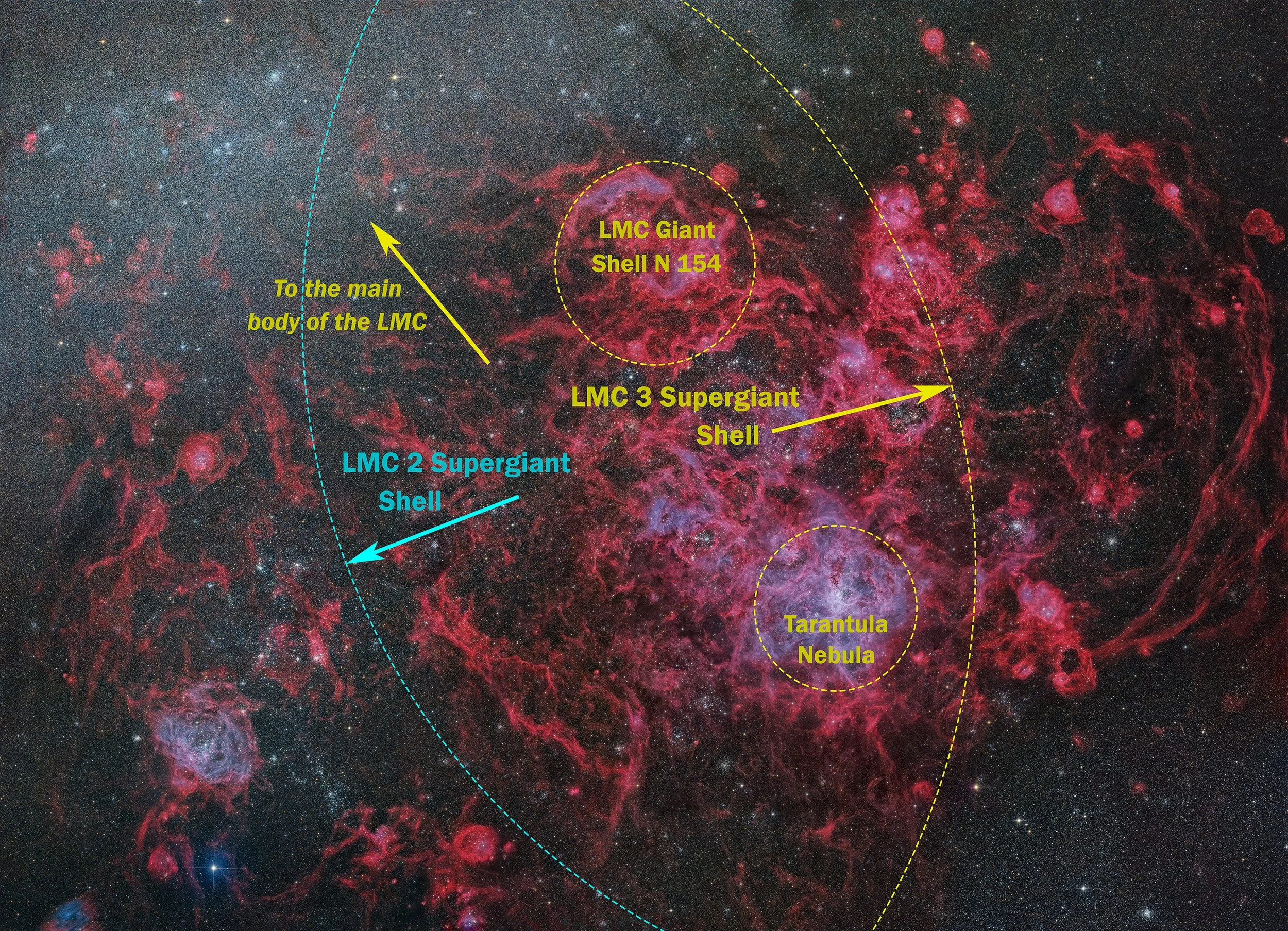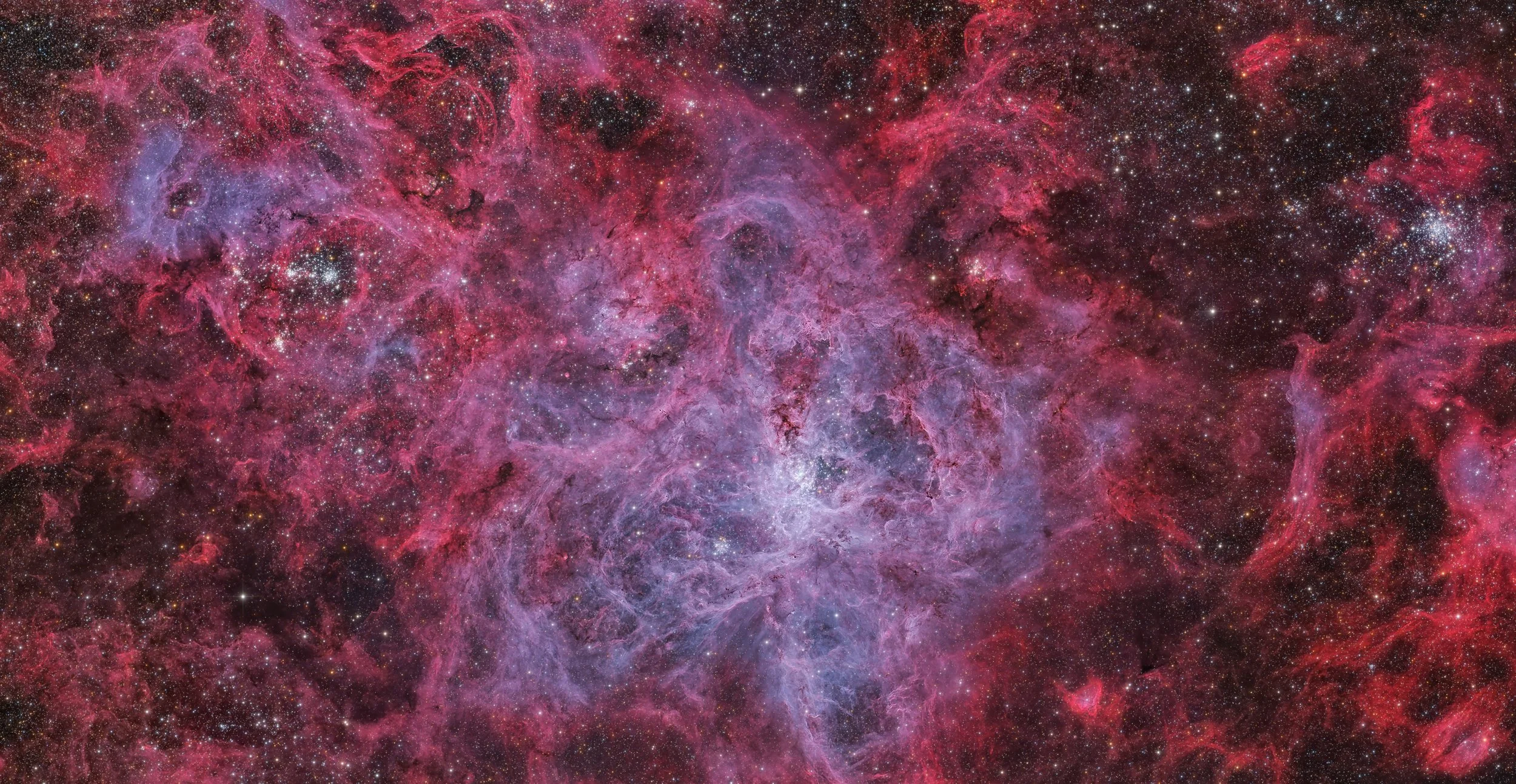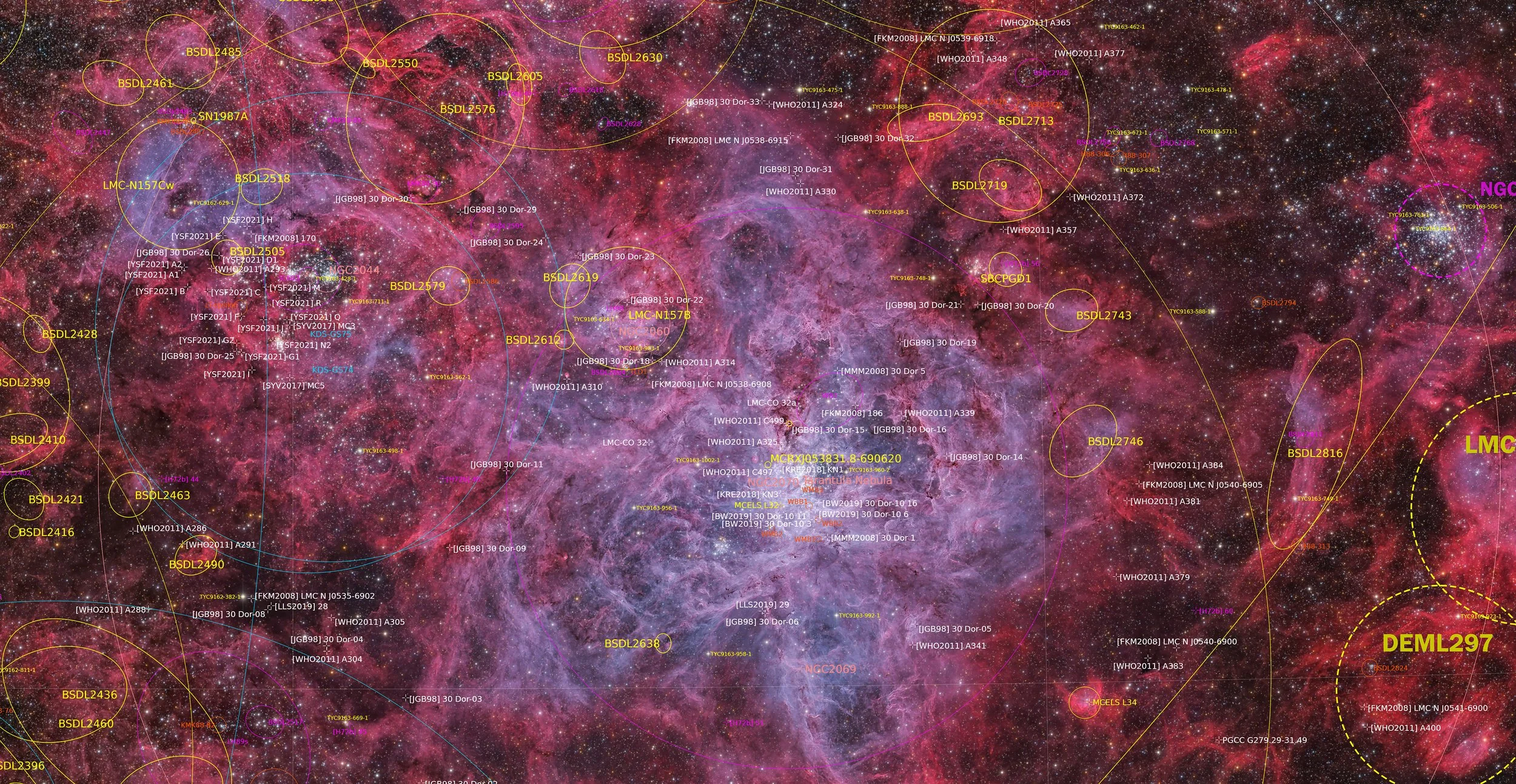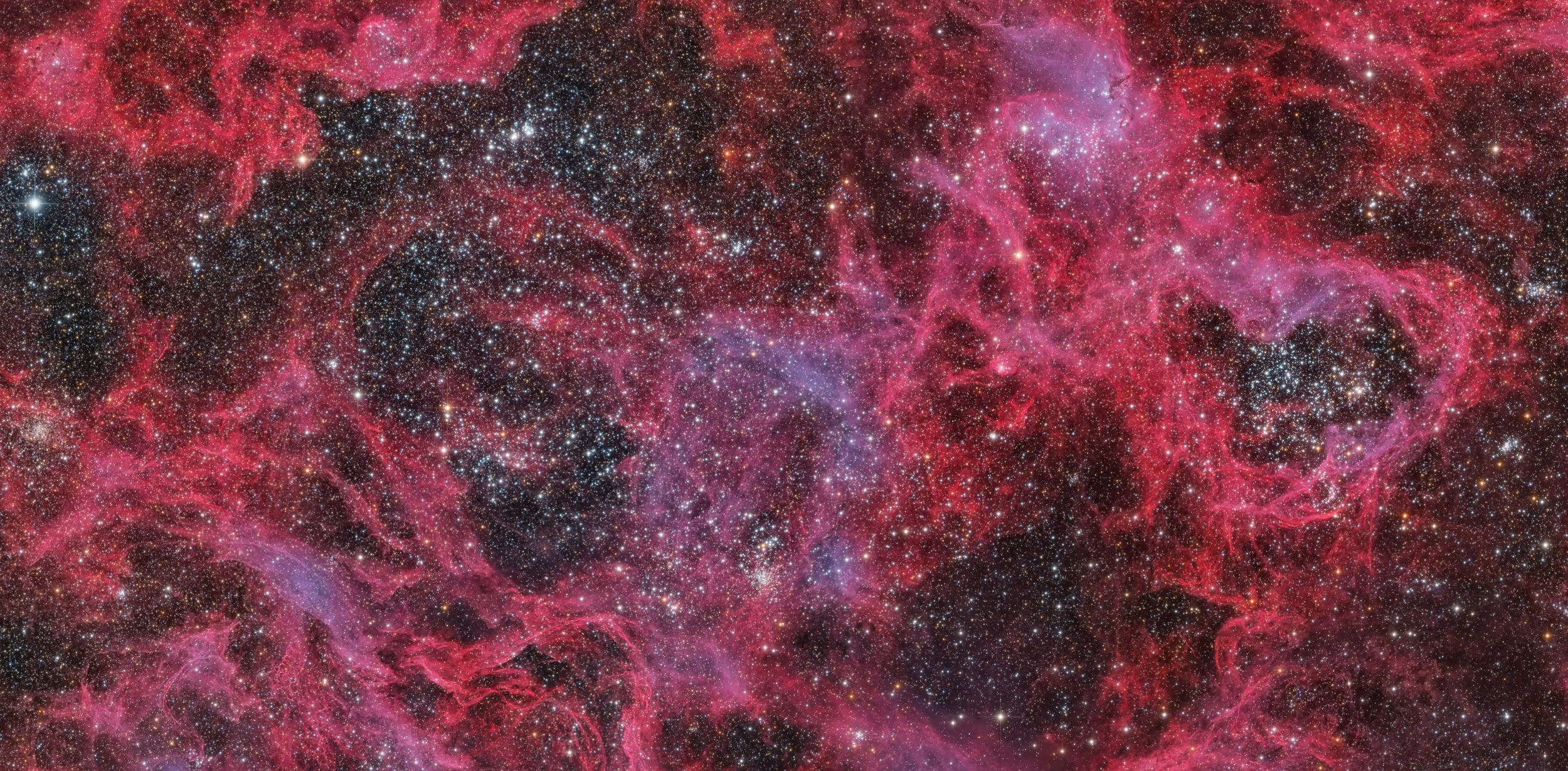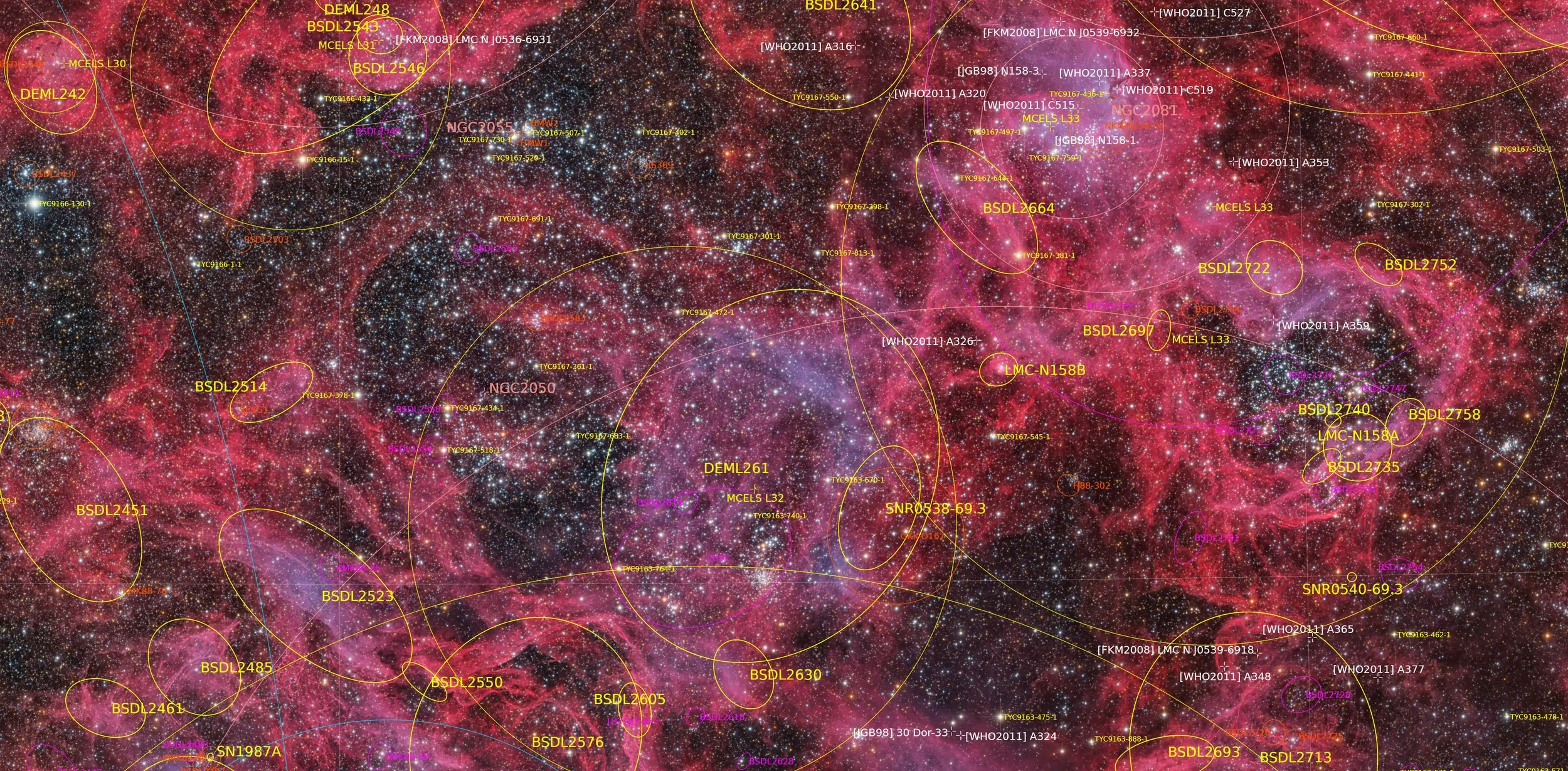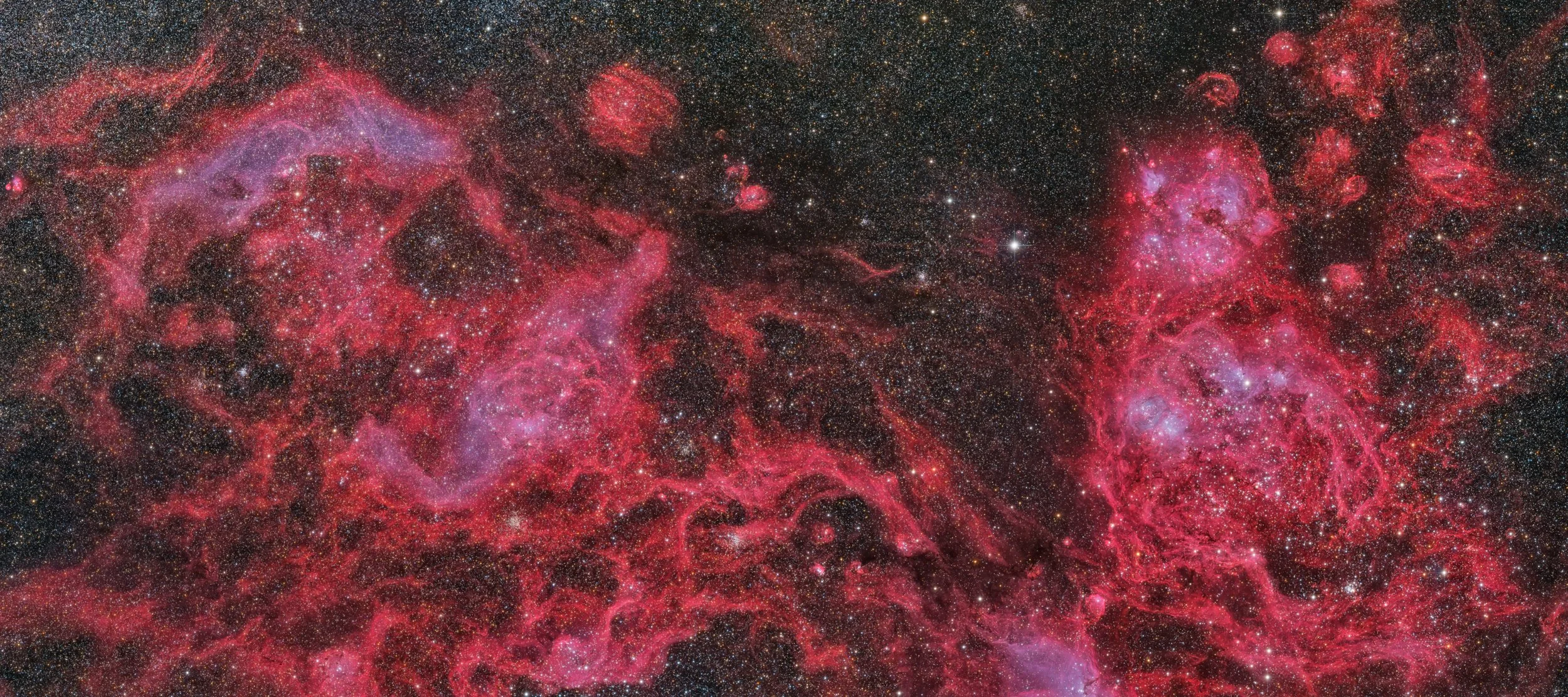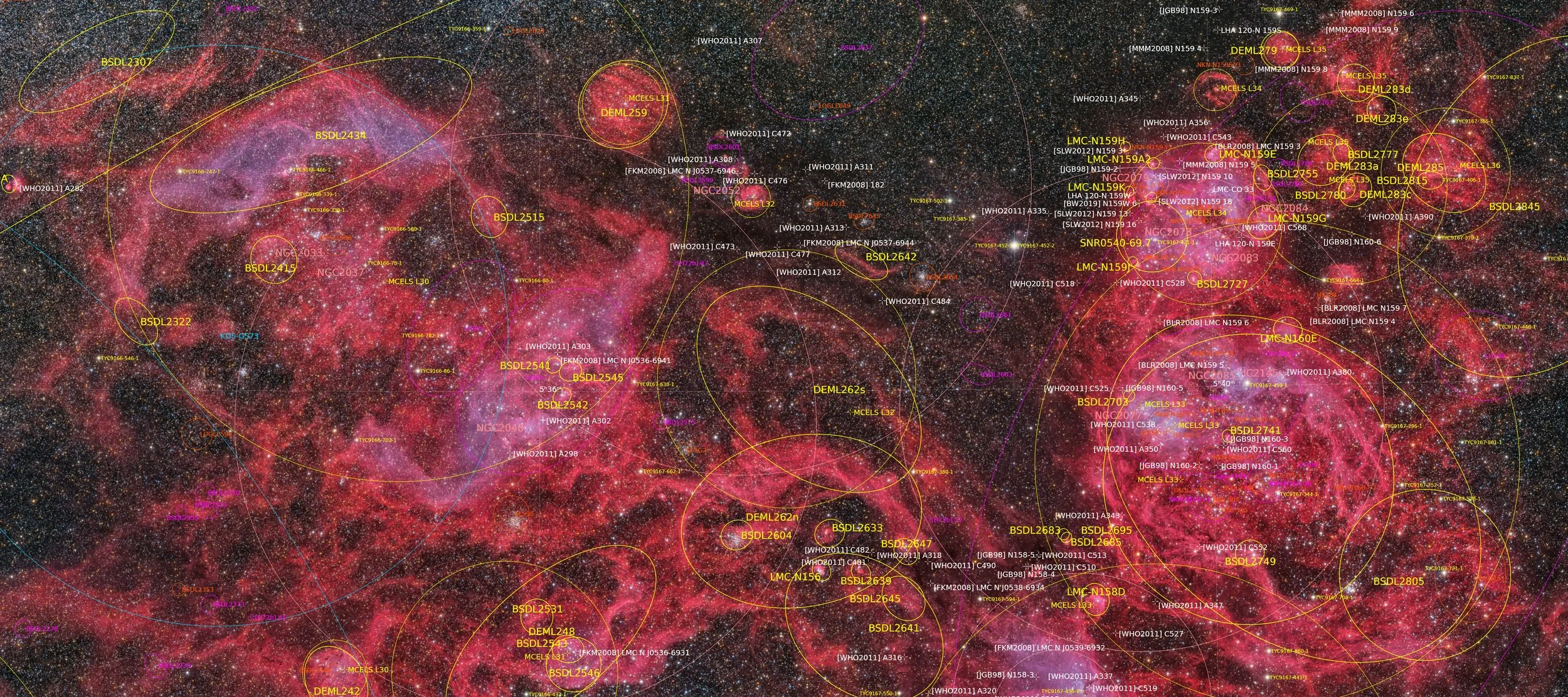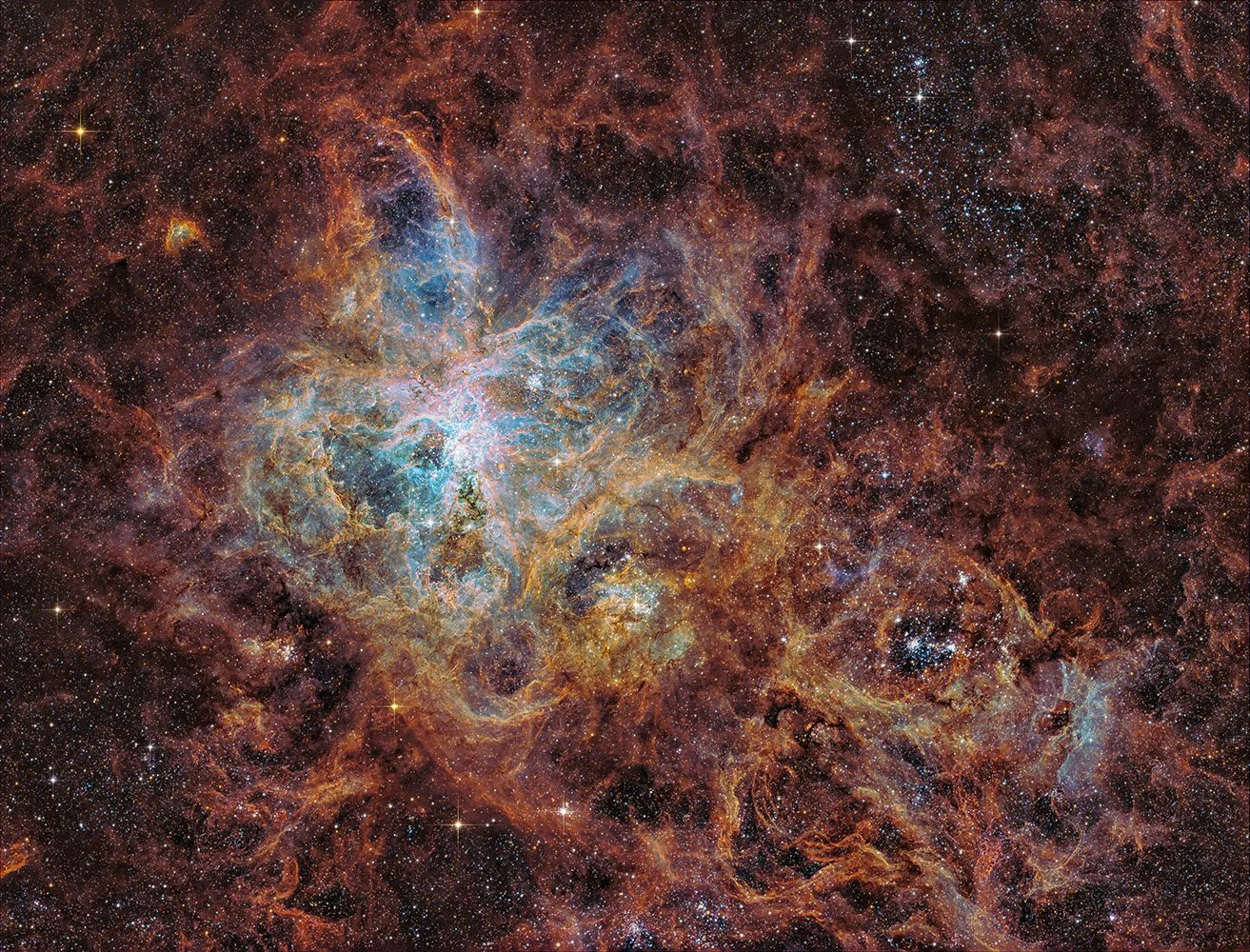Core of the Large Magellanic Cloud
This remarkable image showcases the core of the Large Magellanic Cloud (LMC) as a highly detailed 16-panel mosaic covering more than 3.5 square degrees in the sky with 0.381 arc.sec./px. The composition beautifully reveals the wide array of gaseous colors and complex structures within the cloud, including twisting, looping, bubbling, and explosive forms. In addition to these vibrant features, the mosaic highlights numerous globular clusters and millions of stars, creating a truly stunning and captivating view of this astronomical region.
Image Processing and Data Collection
The image was processed and calibrated by Mark Hanson using advanced methods to ensure exceptional clarity and detail. The data for this mosaic was gathered by Hanson, Mazlin, Parker, and Forman in 2025. Observations were made using a 24-inch Planewave CDK telescope with an f/6.5 configuration, mounted on an L600, and a Moravian C5 camera located at El Sauce, Chile.
The final mosaic consists of 16 panels, captured in Red, Green, Blue (RGB), and Hydrogen-alpha (Ha) bands, with binning at 2x2. In total, 1520 R, G, B, Ha frames were taken, resulting in 94+ hours of cumulative observation time so far, OIII and SII to follow.
Enjoy this breathtaking view!
Presented by Mark Hanson, the SWOS Group and Alexander Zaytsev
The annotated version was produced by Alex Zaytsev and is a must see.
Fig.1. Annotated version of the image: emission nebulae, SNR candidates and HII regions are shown in yellow ovals and markers (Tycho-2 catalog stars as also identified by the yellow markers); ISM shells and superbubbles shown in blue; star associations and star clusters shown in magenta; compact molecular clouds from various catalogs identified by white markers; compact dark nebulae are identified by the pink markers.
The Large Magellanic Cloud is a dwarf galaxy and stands as one of the Milky Way's closest and most massive satellite galaxies. Visible to the naked eye from the Southern Hemisphere, the LMC appears as a hazy, luminous patch in the night sky. It is a highly dynamic region, well-known for intense star formation activity and hosting many interesting astronomical objects.
Type: Dwarf irregular galaxy, with some signs of a barred spiral structure
Distance: Approximately 160,000 light-years from Earth
Size: About 14,000 light-years in diameter, roughly one-tenth the size of the Milky Way
Star Count: Contains approximately 30 billion stars
Location: Located in the southern constellations of Dorado and Mensa
One of its most notable features is the Tarantula Nebula (30 Doradus) [1]: The largest and most luminous star-forming region in the Local Group of galaxies. If it were as close as the Orion Nebula), it would be bright enough to cast shadows.
The LMC and the Small Magellanic Cloud (SMC) are gravitationally bound to each other and are engaged in a slow, intricate gravitational dance with the Milky Way. Recent studies indicate that the LMC may be a first-time visitor to our cosmic neighborhood, rather than a long-term satellite. This ongoing interaction is causing some of the LMC's outer halo of gas to be stripped away, though its dense core remains intact. Looking far into the future, a merger between the LMC and the Milky Way is anticipated to occur in about 2.4 billion years. SMC mosaic can be seen under [2].
The central region of the image containing Tarantula Nebula (30 Doradus) is sitting in the overlap of two LMC Supergiant Shells: LMC 3 and LMC 2 is shown in Fig. 2 (the location of other Supergiant Shells in the LMC is shown in [3, 4] and their structure described in more details in [5, 6]). This overlap is likely responsible for an extreme level of complexity if the emission nebulae structures in this region with added numerous compact neutral gas clouds sitting in front, behind and in between of them along the light of sight, resulting in beautiful patterns that require rather careful processing to preserve them in this high dynamic range scene.
Three sub-regions of in the center LMC 3 and LMC 2 Supergiant Shell overlap region are of particular interest here as shown in the cropped and cropped annotated versions or the original image shown in Fig. 3, Fig. 4 and Fig 5:
Fig. 3 shows the area containing Tarantula Nebula (30 Doradus) and its immediate vicinity populated with numerous star clusters and star associations. The supernova remnant SN1986A [7] is also sitting on the boundary of LMC-N157 [8] HII region of unusual horseshoe shape in the upper left corner.
Fig. 4 shows the area of the original image sitting above the one shown in Fig. 3, dominated by the DEM L261 [9] HII region hosting several star associations and the LMC-N158 [10] HII region on the right side of the cropped image that has multiple star clusters perfectly framed by the walls of the HII region. There are rather peculiar “double wall” ripple-like diffuse structures in the lower left corner of the frame.
Fig. 5 continues the scan of the original image going in upward direction showing the area filled with multiple HII regions complete with several stand-alone SNRs in the middle top portion and the upper right corner of the frame.
Three more sub-regions of particular beauty are sitting on the sides of the LMC 3 and LMC 2 Supergiant Shell overlap region in the original image, shown in the cropped and cropped annotated versions of the original image shown in Fig. 6, Fig. 7 and Fig. 8:
Fig. 6 shows the area containing star association BSDL 2059 [11] that has a particularly dense neutral gas cloud band around it.
Fig. 7 shows the area around a compact LMC-N167 [12] HII region that forms a pair with the NGC 2108 [13] globular cluster.
Fig. 8 shows the cropped area of the original image containing a tight group of DEM L297 [14] HII region, LMC-N164 emission nebula [15], and DEM L299 (LMC-N165, SNR B0543-68.9) [16] supernova remnant, which is possibly actually a collection of several SNRs as there are multiple secondary bubbles embedded in its walls.
Sneak Peek of the narrowband of Tarantula Nebula, Soon for entire mosaic.
The LMC and SMC are gravitationally bound to each other and are engaged in a slow, intricate gravitational dance with the Milky Way. Recent studies indicate that the LMC may be a first-time visitor to our cosmic neighborhood, rather than a long-term satellite. This ongoing interaction is causing some of the LMC's outer halo of gas to be stripped away, though its dense core remains intact. Looking far into the future, a merger between the LMC and the Milky Way is anticipated to occur in about 2.4 billion years. SMC mosaic can be seen here: https://www.hansonastronomy.com/smc-mosaic
